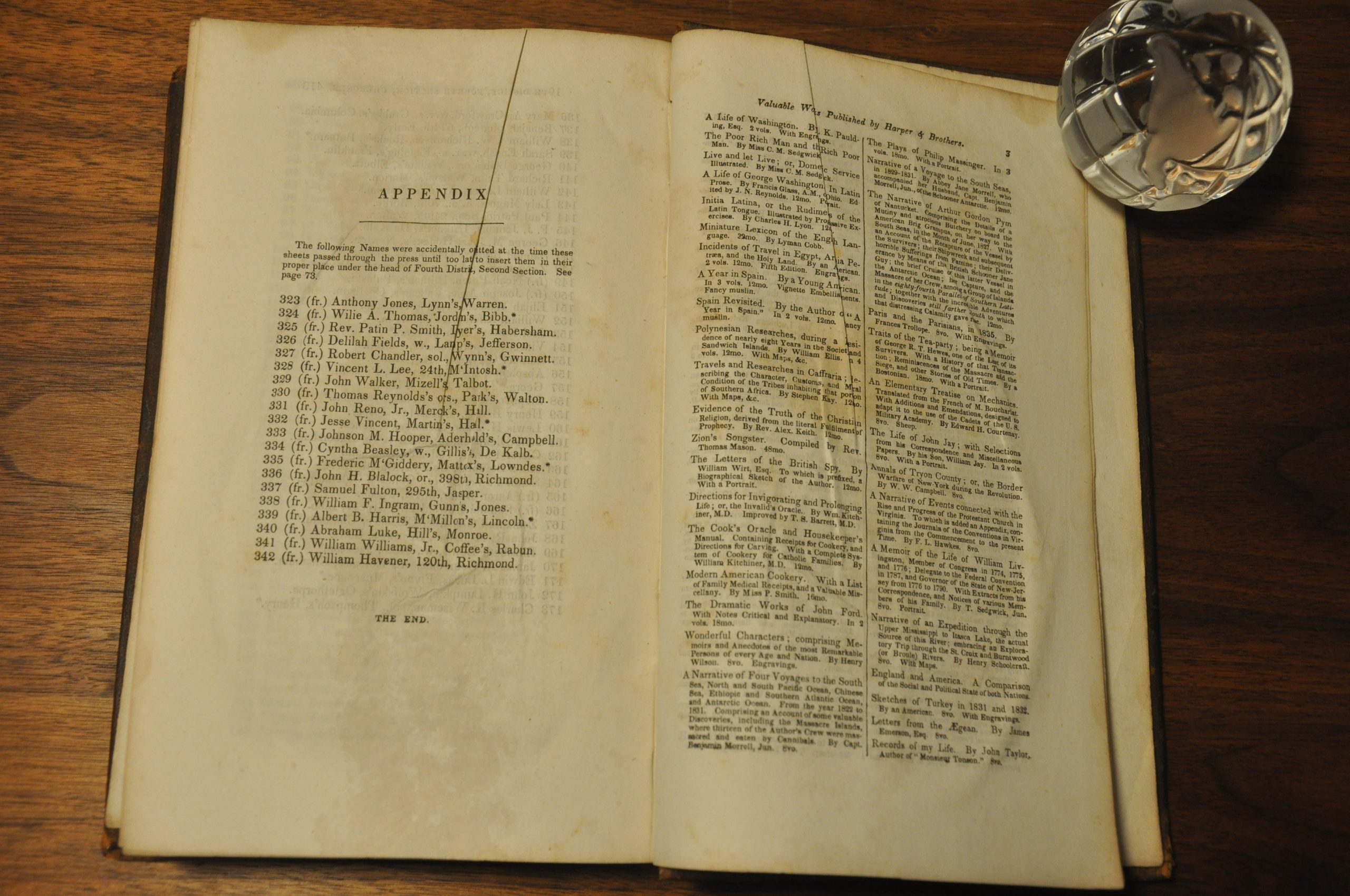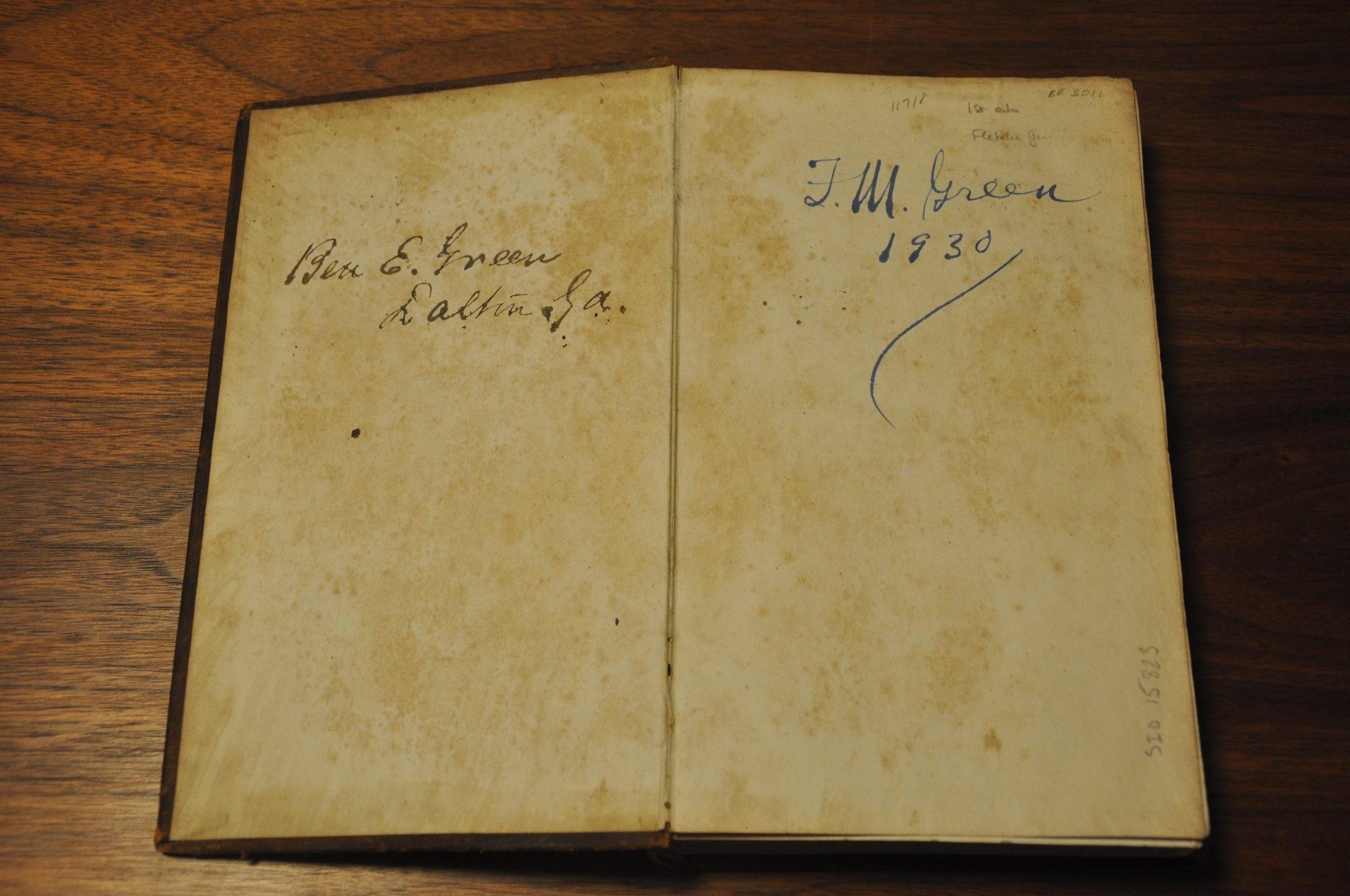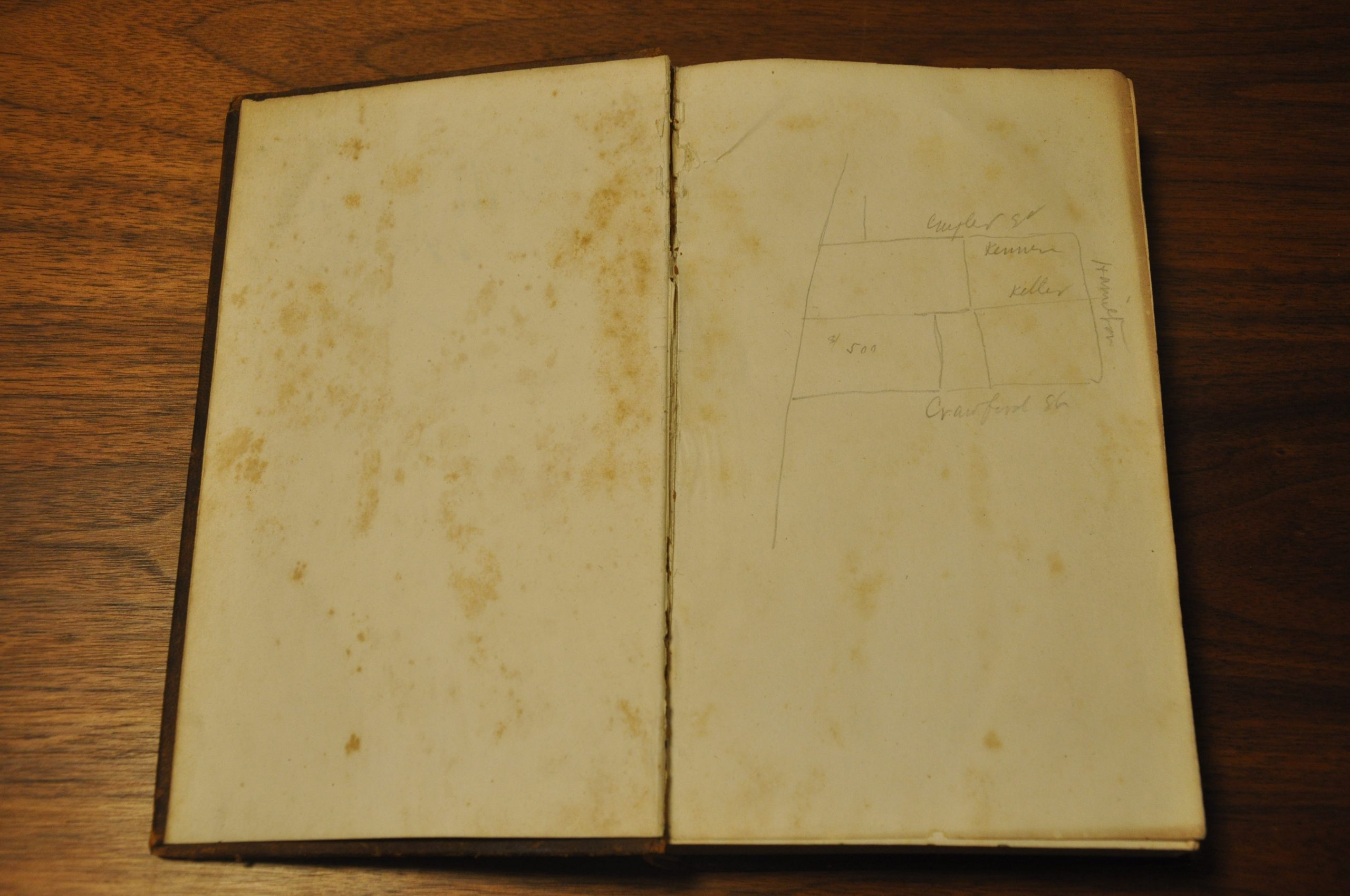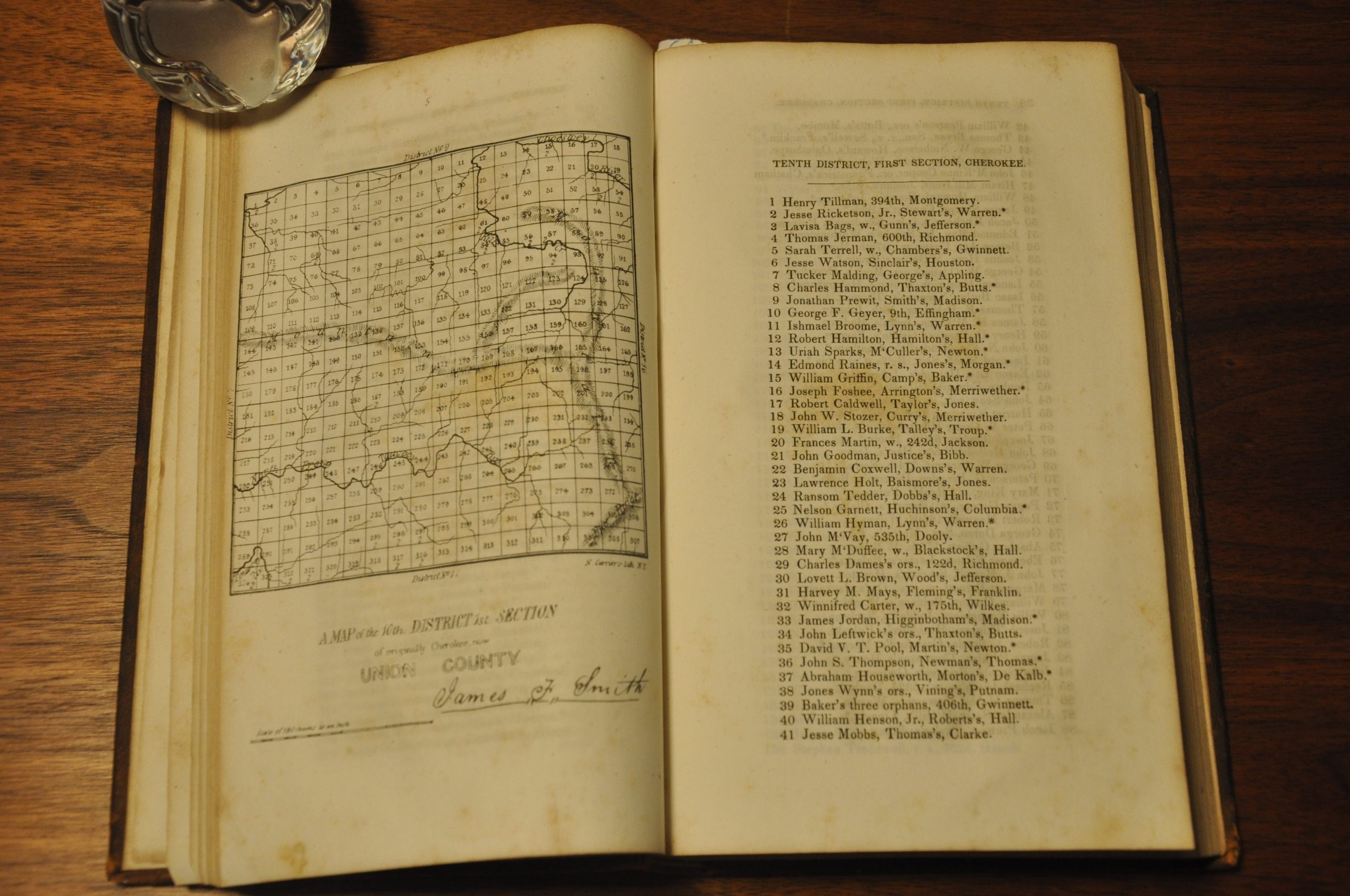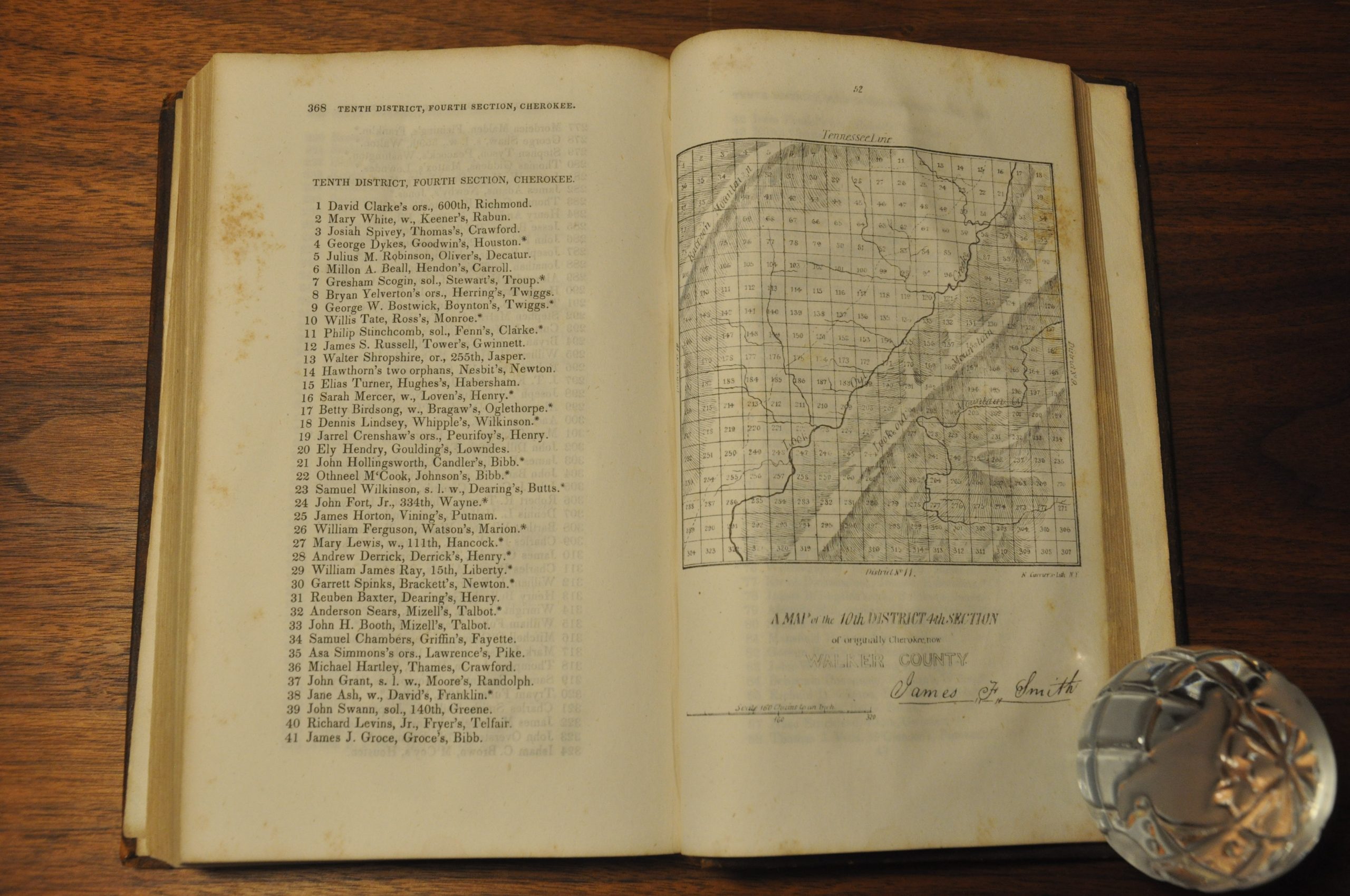The Cherokee Land Lottery, Containing a Numerical List of the Names of the Fortunate Drawers in Said Lottery, with an Engraved Map of Each District.
$750.00
From dispossession to possession – a catalog of property theft in Georgia.
1 in stock
Description
In the early 1800’s, the state of Georgia developed a land lottery system to encourage population growth (and thus representation in Congress) and combat real estate fraud. Eligible citizens would submit their name and county of residence to the governor’s office, who would then draw both a name and a ticket representing a surveyed parcel of land. Because each lottery was over-subscribed, a number of these tickets would be blank. Winners could then pay a fee and obtain a grant to the lot drawn.
The system was first used successfully in 1805 on lands ceded by the Creek Indians. Subsequent acquisitions, accelerated by the Creek War of 1814, were also auctioned off and the last Creek lands were forcibly ceded in 1826. Several years later, gold was found in Georgia, encouraging further encroachment onto lands owned by the Cherokee. The Indian Removal Act of 1830 allowed President Andrew Jackson to ‘legally’ force these remaining indigenous tribes onto reservations west of the Mississippi River, prompting what would later become known as the Trail of Tears. Lotteries in 1832 and 1833 distributed the remaining Cherokee lands, even though a ‘formal’ treaty dispossessing the tribe of its final territory wouldn’t be signed until 1836.
While the Native American populations suffered on their overland journey west to inhospitable lands, Georgia settlers filled the void left by their removal. The 1832 lottery was one of the largest in terms of territory, and a wide range of eligible applicants included Georgia bachelors/widows, veterans, children of convicts, and young “male idiots, lunatics or insane, deaf and dumb, or blind.” There was naturally tremendous commercial interest; ranging from individual applicants and small shareholding families to industrial entrepreneurs, large slaveholding agriculturalists, and real estate speculators.
James Smith of Milledgeville, Georgia looked to capitalize on the broad appeal, and published this volume as a catalog of the 1832 land lottery winners and their respective lots. Over 400 pages offer a detailed list of the ‘fortunate drawers’, along with their place of residence, the lot won, and whether or not they had paid the grant fee as of January 1, 1838. A variety of abbreviations indicate the winner’s eligibility criteria.
Accompanying maps of each district, engraved by Nathaniel Currier (prior to the fame of Currier & Ives), show the numbered lots along with basic topographic detail. Normal lots were 160 acres and required an $18.000 grant fee, though some fractional lots are noted. Rudimentary outlines of waterways and roads are also provided, where applicable, and could drastically increase the value of particular areas.
This fascinating piece of history is one of the earliest legal records of land ownership across large portions of northern Georgia, and a tangible record of the disgraceful forced removal of Native American tribes. Source.
Map Details
Publication Date: 1838
Author: James F. Smith
Sheet Width (in): See
Sheet Height (in): See
Condition: B+
Condition Description: 413 pp. + 6 pp. of advertisements and an appendix with corrections. Bound in original full leather with covers measuring approximately 5.5" x 9". Cracked spine and the boards are worn around the outer edges. Two owners' inscriptions on the front endpapers (same family - Green) and a manuscript map in pencil on the second blank page. Gutters are cracked and the contents are spotted ranging from faint to moderate. A bit of extraneous creasing on a few pages, but the majority are good or very good.
$750.00
1 in stock


